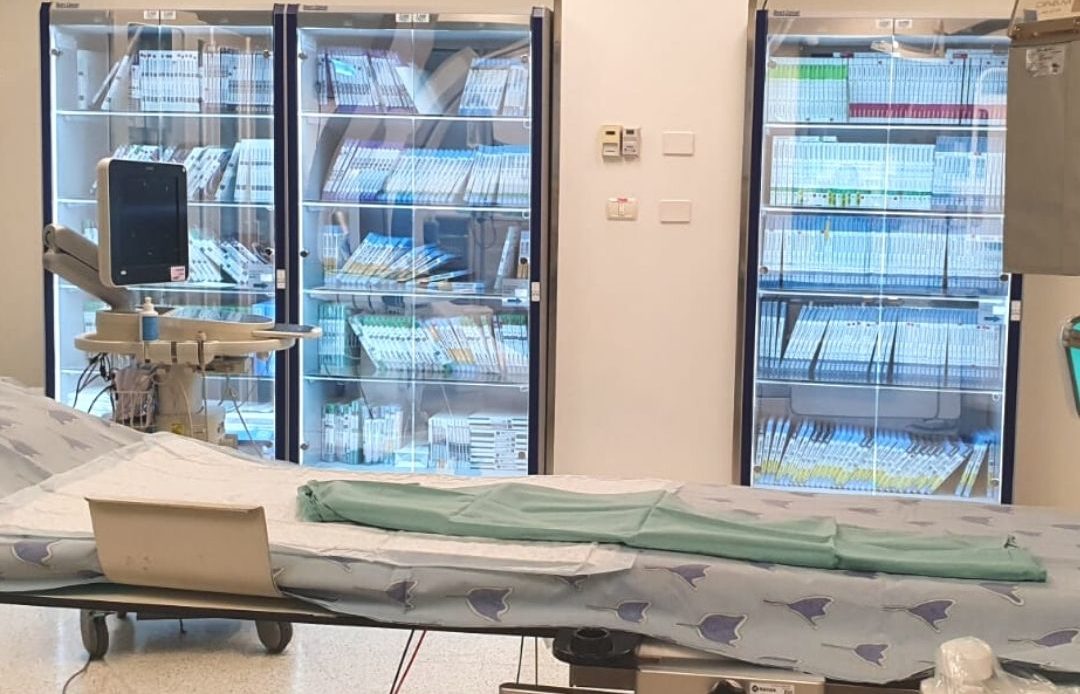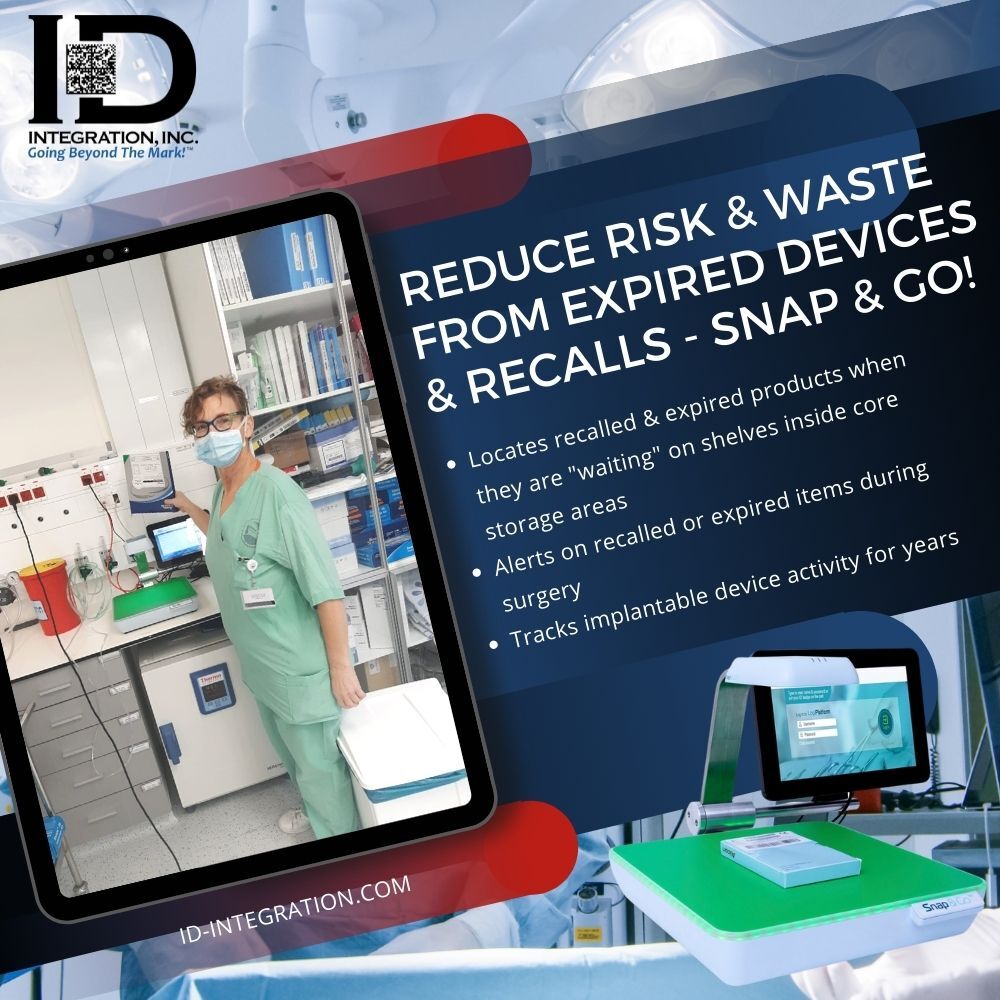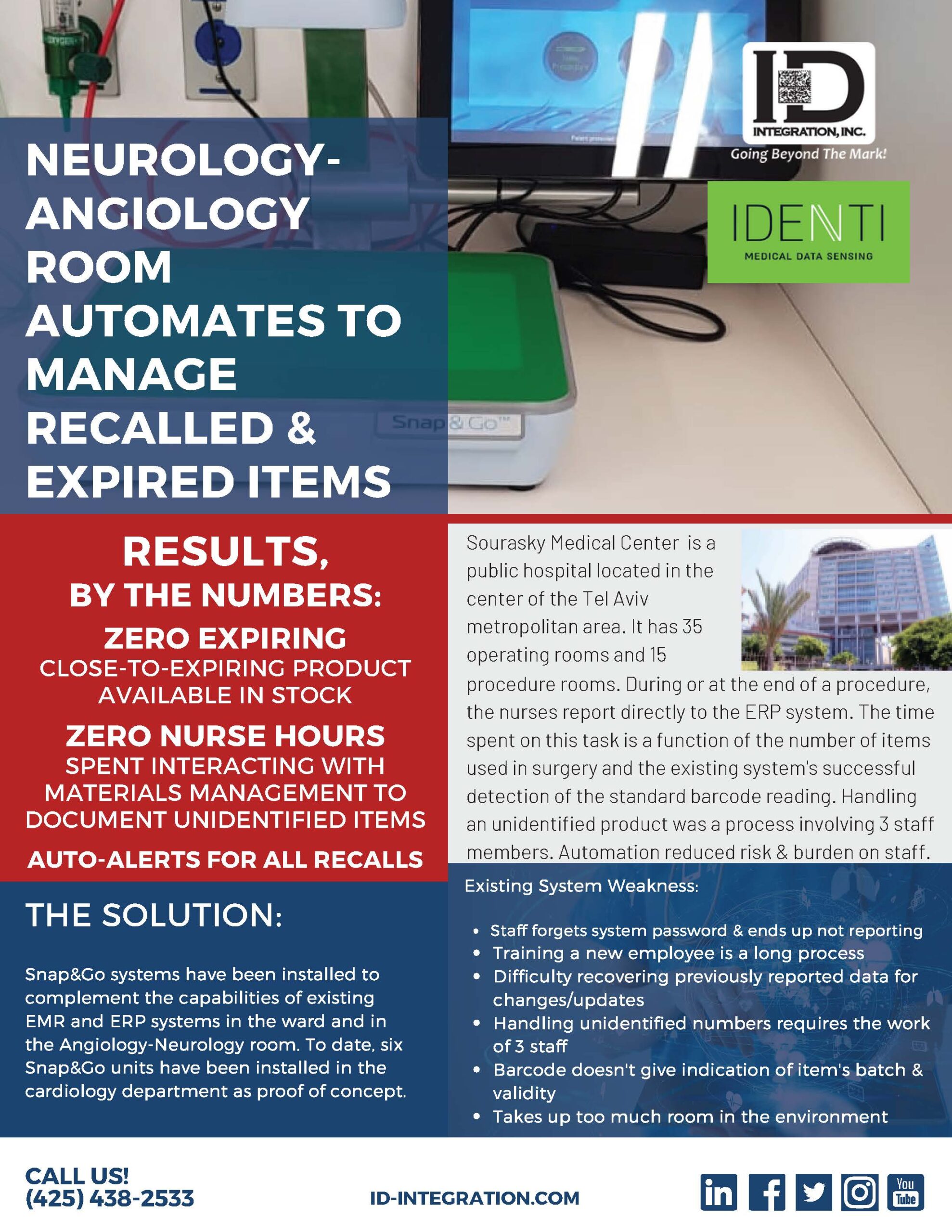Today’s hospital and care facility staff shortages create a true burden.
Essential medical personnel are required to devote extra hours to their workday remaining focused on patient care. They don’t have the bandwidth to divert their attention to the administrative tasks of manually checking whether medical devices are under recall or expired. Could your medical facility be flirting with this same risk? Is your medical team aware of the expiration or recall status of all devices in their OR?
Hospitals using expired medical equipment pose a very real threat to the well-being of patients.
The solution is to rely on automated healthcare data capture to mitigate risks and ensure safety. Here at ID Integration, we provide several systems that save time and eliminate errors made by counting and entering data manually. Our solutions are lifesavers for your patients and for your hospital’s reputation.
How real is the risk of only relying on the packaging to determine medical device safety?
Does your staff pay attention to every fax, email, and letter announcing urgent product recalls? Do they comb the device manufacturer’s websites for recall notices? They don’t have the time.
A snowball effect ensues, creating a nightmare for Medical Device Reporting (MDR) to the FDA. When the safety of a product is in question, medical organizations must provide specific critical information to remain in compliancy. Can your staff singlehandedly collect and submit the accurate documentation required by the FDA?


Steve Miller, RN, and founder and CEO of Medical Materials brought this acute issue of expiring and recalled medical devices to light.
His company repurposes expired and unopened medical devices for educational uses and non-clinical research for the good of the world. In his testing, he discovered, many insights.

Recalled and expired medical equipment is more than an issue of trashing valuable inventory.
Miller describes a case where a stent broke off at the tip during an implant procedure. The OR team realized that the cause of device failure was a result of expiration—The stent expired 2 years prior to its use. Device components can, “potentially break down over time and be dangerous,” reported Miller (Source: “Expired Cardiac Devices May Do Global Good, but Safety Unknown”, by Yael L. Maxwell). Imagine the ethical issues raised by using outdated equipment. Imagine the legal hot water that can ensue.
Let’s Examine A Few More Case Studies Focused on Recalled and Expiring Device Risk
NY Hospital in Queens eliminates expired items risk and waste using Smart Cabinets for high value and time-sensitive items, like implants, and StockBox for tracking consumables, like surgical supplies. Before automating their data capture, they had to manually manage expiration dates.

The results at New York-Presbyterian Hospital after healthcare data capture technologies were installed were phenomenal:
- 25% inventory decrease
- $100K savings from expired waste
- 8 hours weekly saved nurse time
Download our one-sheet case study summary by clicking here.
Tel Aviv metropolitan-located hospital, Sourasky Medical Center, automated their Neurology-Angiology room to manage recalled and expired items.
Prior to their Snap&Go implementation, the nurses were required to report directly to the ERP system with some help from barcode readers. However, when they encountered unidentified products, the process required the involvement of three staff members.
Sourasky Medical Center’s results after implementation were very impressive:
- Zero expiring/close-to-expiring product available in stock
- Zero nurse hours spent interacting with Materials Management to document unidentified items
- Auto-alerts for all recalls
Download our one-sheet case study summary by clicking here.
Labor shortages in healthcare, the danger of expired and recalled medical devices in use, and the extraordinary cost of equipment that must be retired creates a trifecta of problems for hospitals and healthcare facilities.
Enter healthcare data capture solutions from ID Integration:

Snap&Go™ – Forget about wasting time with data entry in the OR. Snap&Go takes a quick “picture” of the item and then records the necessary documentation to free up doctors, nurses, and hospital staff for surgery and caregiving tasks. The optical image sensor collects real-time data for the billing of items used in surgery. Unrecognized items are identified and added to a global database containing thousands of details, and the software provides useful insights for inventory management. Snap&Go also provides instant alerts for recalls and expired devices, effectively mitigating this risk.

Smart Cabinets – Forget human errors when manually entering inventory data. Our Smart Cabinet is the ONLY digital inventory management solution for tracking medical devices, consignment stock, implants, and more. Items are tracked to the last person that used them, eliminating lost items. Each tagged item within the Smart Cabinet is in touch with the manufacturer wirelessly, so that when an item is out-of-stock or running low on the cabinet shelves, a report is sent for restock. When Items are approaching expiration, you are notified in real time. Reordering and billing tasks are automated seamlessly.
See our entire suite of automated data capture for healthcare applications to experience 48% less personnel hours spent wasted on administration tasks, and error-free inventory tracking. Bring an end to manual counting, last-minute orders, and the use of expired and recalled items. Contact our healthcare data capture experts at (425) 438-2533 to learn about innovative automatic data management technology customized to suit your hospital’s needs.




